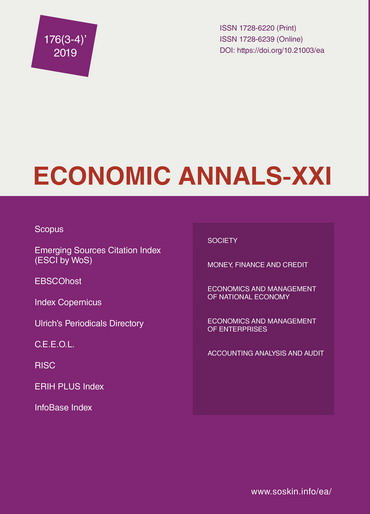Approaches to project portfolio formation by pharmaceutical products producers
Approaches to project portfolio formation by pharmaceutical products producers
Author(s): Yana DerenskaSubject(s): Business Economy / Management, Health and medicine and law
Published by: Institute of Society Transformation
Keywords: Project; Project Priority; Project Portfolio Management; Multiple Criteria Ranking; Project Portfolio Clusters;
Summary/Abstract: Introduction. The pharmaceutical market is characterized by a stable annual growth of 5-6%. According to the results of sales in 2018, the key domestic producers of pharmaceutical products were PJSC «Farmak» (the market share was 5.4%; the sales growth was 20.7%, compared to the previous year), Arterium Corporation (the market share - 3.5%; the sales growth - 17.6%), PrJSC «Pharmaceutical Firm «Darnitsa» (the market share - 3.27%; the sales growth - 15.3%), the Group of Companies «Zdorovya» (the market share - 2.32%; the sales growth - 12.4%).The successful functioning of a modern enterprise largely depends on its ability for sustainable development by means of introducing innovations, developing new products and adopting effective models of management. All these activities require that an enterprise adopts a project approach. As the number of projects is growing, alongside with their cost and life cycle, it is becoming increasingly important to implement the concept of portfolio management. The present research outlines different approaches to creating a project portfolio and describes instruments that can help enterprises select an effective combination of projects in a portfolio. The object of the research is the project activity of a «Pharmaceutical Company «Zdorovya». In order to achieve the purpose of the research, the author applies multiple criteria weighted ranking and cluster analysis. Methods. Multiple criteria weighted ranking is used on the first stage of project evaluation in order to define its ranking (priority). The method of multidimensional classification, as well as cluster analysis in particular, is used to divide all the projects into groups. The advantage of cluster analysis lies in the fact that it allows businesses to group projects according a great number of miscellaneous parameters. Joining (tree clustering) and K-means clustering methods are employed with the help of STATISTICA software. Ward’s method as amalgamation (linkage) rule and Euclidean distances as distance measure are also applied as methods of cluster formation. Results. Project ranking based on the level of risk, the investment cost, the net present value, the profitability index and the discounted payback period allowed the author to define the priority of each project and suggest recommendations as to how they should be included into the portfolio of projects. Nine projects were considered in order to create a project portfolio for a pharmaceutical enterprise. Multiple criteria weighted ranking shows that Project 3 has the highest priority.The conducted clasterisation revealed three clusters of projects that characterise different directions in the process of starting a modern pharmaceutical manufacturing facility (Cluster 3), launching a new medicine into the market (Cluster 2) and expanding the existing range of products (Cluster 1). Conclusion. While forming a project portfolio, it appears worthwhile to use a combination of three parameters: risk, effectiveness and cost. Additively, which is characteristic of net present value criterion, allows businesses to select the most effective combinations of projects in their portfolio. Based on the results of calculations, it is recommended to form a portfolio of 4 projects with a net present value of EUR 179,501.
Journal: Економічний часопис - ХХІ
- Issue Year: 176/2019
- Issue No: 3-4
- Page Range: 99-108
- Page Count: 10
- Language: English

